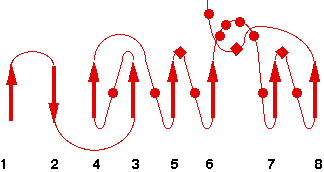4H77
Name : Crystal structure of haloalkane dehalogenase LinB from Sphingobium sp. MI1205
Revelation date : 05-Jun-2013
Family : Haloalkane_dehalogenase-HLD2
Gene_locus : sphpi-q6vqx3
PDB file : ESTHER: header of PDB entry RCSB: Full entry
Comment
Okai, M., Ohtsuka, J., Imai, F.L, Mase, T., Moriuchi, R., Tsuda, M, Nagata, K., Nagata, Y., Tanokura, M.
Ligand :
References (1)
| Title : Crystal Structure and Site-Directed Mutagenesis Analyses of Haloalkane Dehalogenase LinB from Sphingobium sp. Strain MI1205 - Okai_2013_J.Bacteriol_195_2642 |
| Author(s) : Okai M , Ohtsuka J , Imai LF , Mase T , Moriuchi R , Tsuda M , Nagata K , Nagata Y , Tanokura M |
| Ref : Journal of Bacteriology , 195 :2642 , 2013 |
| Abstract : Okai_2013_J.Bacteriol_195_2642 |
| ESTHER : Okai_2013_J.Bacteriol_195_2642 |
| PubMedSearch : Okai_2013_J.Bacteriol_195_2642 |
| PubMedID: 23564170 |
| Gene_locus related to this paper: sphpi-q6vqx3 |
Representative scheme of Prolylcarboxypeptidase structure and an image from PDBsum server

